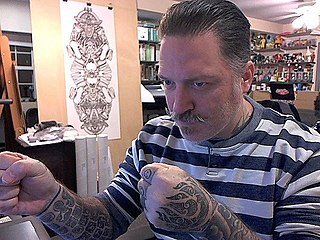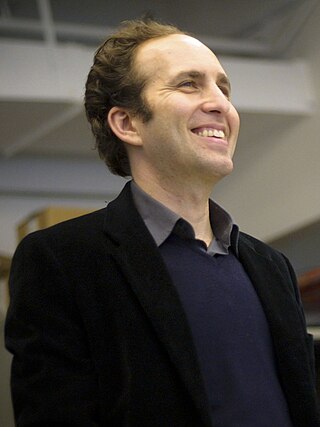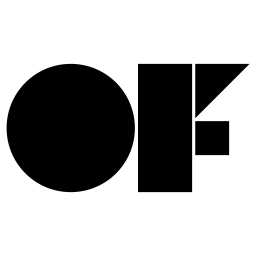
Digital art refers to any artistic work or practice that uses digital technology as part of the creative or presentation process. It can also refer to computational art that uses and engages with digital media.
The Prix Ars Electronica is one of the best known and longest running yearly prizes in the field of electronic and interactive art, computer animation, digital culture and music. It has been awarded since 1987 by Ars Electronica.

Karl Sims is a computer graphics artist and researcher, who is best known for using particle systems and artificial life in computer animation.

Joshua Davis is an American designer, technologist, author, and visual artist in new media.

Norman White Canadian New Media artist considered to be a pioneer in the use of electronic technology and robotics in art.

Scott Snibbe is an interactive media artist, author, entrepreneur, and meditation instructor who hosts the Skeptic's Path to Enlightenment meditation podcast. His first book, How to Train a Happy Mind, was released in 2024. Snibbe has collaborated with other artists and musicians, including Björk on her interactive “app album” Björk: Biophilia that was acquired by New York's MoMA as the first downloadable app in the museum's collection. Between 2000 and 2013 he founded several companies, including Eyegroove, which was acquired by Facebook in 2016. Early in his career, Snibbe was one of the developers of After Effects.
Eyebeam is a not-for-profit art and technology center in New York City, founded by John Seward Johnson III with co-founders David S. Johnson and Roderic R. Richardson.

Golan Levin is an American new media artist, composer, performer and engineer interested in developing artifacts and events which explore supple new modes of reactive expression.

James Powderly is an American artist, designer and engineer whose work has focused on creating tools for graffiti artists and political activists, designing robots and augmented reality platforms, and promoting open source culture.

Theo Watson is a British artist and programmer. His art work includes interactive video, large-scale public projections, computer vision projects, and interactive sound recordings which have featured in museums and galleries across the world including Museum of Modern Art, New York Hall of Science, Tate Modern amongst others. Watson is a partner at Design I/O, a Cambridge-based interactive design firm known for cutting edge, immersive installations. He is also co-founder of the programming toolkit openFrameworks, co-creator of the EyeWriter and a virtual fellow at Free Art and Technology Lab.

openFrameworks is an open source toolkit designed for creative coding founded by Zachary Lieberman, Theo Watson and Arturo Castro. OpenFrameworks is written in C++ and built on top of OpenGL. It runs on Microsoft Windows, macOS, Linux, iOS, Android and Emscripten. It is maintained by its founders with contributions by other members of the openFrameworks community.
Benjamin Fry is an American designer who has expertise in data visualization.
The EyeWriter is a low-cost eye tracking system originally designed for paralyzed graffiti artist Tempt1. The EyeWriter system uses inexpensive cameras and open-source computer vision software to track the wearer's eye movements.
Stefan Hechenberger is an Austrian artist and programmer. His works include interactive software, computer vision projects and open-source hardware.
Sabine Seymour is a designer, author, entrepreneur, and researcher, known for her work in fashionable technology and design. She is the director of the Fashionable Technology Lab and Assistant Professor of Fashionable Technology at Parsons the New School for Design. Seymour is the founder of Moondial Inc., a consulting company specializing in the integration of technology and fabrics.

Ars Electronica Linz GmbH is an Austrian cultural, educational and scientific institute active in the field of new media art, founded in Linz in 1979. It is based at the Ars Electronica Center (AEC), which houses the Museum of the Future, in the city of Linz. Ars Electronica's activities focus on the interlinkages between art, technology and society. It runs an annual festival, and manages a multidisciplinary media arts R&D facility known as the Futurelab. It also confers the Prix Ars Electronica awards.

Marcelo Coelho is a Brazilian American computation artist and designer. His work focuses on the boundaries between matter and computation, and includes interactive installations, photography, wearables, and robotics. Coelho is currently Head of Design at Formlabs, a Lecturer at the MIT School of Architecture and Planning and Principal Investigator at MIT's Design Intelligence Lab, a research lab inventing new forms of expression and collaboration between human and machine intelligence.
The School for Poetic Computation (SFPC) is a hybrid of a school, residency and research group that was founded in 2013 in New York City. A small group of students and faculty work closely to explore the intersections of code, art, hardware and theory—focusing especially on artistic intervention, including code poetry. Rather than formal classes, the students at the school focus on creative projects. The school's motto is "more poems, less demos."

Franz Fischnaller is a new media artist and transdisciplinary researcher. He is recognized for the creation of his digital, virtual reality and interactive art installations works across the fields of art, technology, humanities and cultural heritage.
Monika Fleischmann is a German research artist, digital media scientist, and curator of new media art working in art, science, and technology. Since the mid-1980s she has been working collaboratively with the architect Wolfgang Strauss. As part of their research in New Media Art, Architecture, Interface Design and Art Theory, they focus on the concept of Mixed Reality, which connects the physical with the virtual world.












